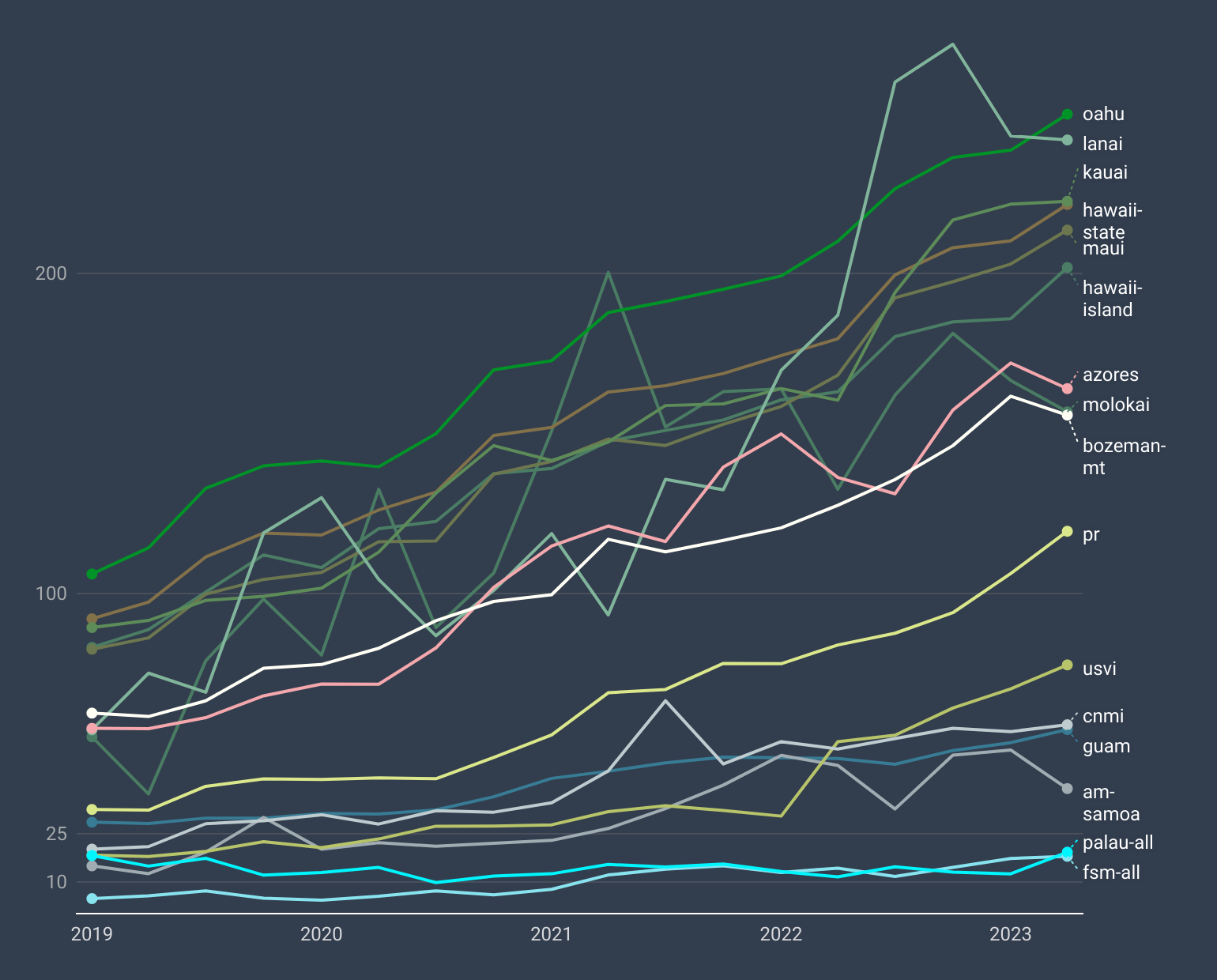Today Pacific Broadband and Digital Equity has announced significant additional data available at its Resources Page. Extending upon the processing of the data generated by Ookla and its Speedtest data, our team has completed the process of filtering out full records for Pacific island territories and insular areas of the United States. We have also expanded our processing to derive records for each Hawaiian island individually as well as the state as a whole.
These processing upgrades have enabled us to handle quarterly data stretching back to the first quarter of 2019. All geospatial data has been uploaded to the repository accessible via our Resources Page. We’ve also conducted extensive analysis on the summary data, which we extracted and converted into a tabular format. While we have focused our analysis on download speeds, the processed data also include upload speeds, latency, and information about the number and general location of the tests and devices.
We acknowledge the ongoing debate regarding the validity of public speed test data. However, by examining the aggregated data—particularly its trends and variability over time—it becomes apparent that this data generates a significant amount of information. Any noise in the data tends to smooth out predictably when dealing with thousands or even tens of thousands of tests.
This phenomenon is vividly demonstrated in the graph above, which displays download speeds for each location we processed. While data from individual Hawaiian islands fluctuates from quarter to quarter, the overall state data shows a relatively steady trend towards improvement. Intriguingly, the data from Bozeman, Montana—which we’ve used as a kind of “control”—follows the rate of change in Hawaii’s speeds within a few percentage points.
One striking aspect when examining the data is that the surveyed Pacific islands (excluding Hawaii) started from a disadvantage, and in many cases, have fallen even further behind. The data from the Federated States of Micronesia is particularly sluggish. However, the low number of overall tests from this region suggests that statistical noise could potentially skew these measurements. Most notably, Guam has consistently lagged behind all other territories in terms of internet speed growth, and the data from Guam is substantial enough to be deemed reliable. The other Pacific territories, including American Samoa and the Commonwealth of the Northern Mariana Islands (CNMI), also significantly trail behind the speeds of the mainland and Hawaii. However, there is a glimmer of hope in the CNMI, where internet speeds are catching up at a rate of change not too far off from that of Hawaii.
We’re optimistic that our data processing methods can be adapted for other areas in the U.S. and around the globe. With the U.S.’s major broadband investment through the Infrastructure Investment and Jobs Act (IIJA), we anticipate not just further improvements but also more equal internet speeds. Uniform, fast internet across all regions might seem ambitious, but the recent investments make it achievable. We hope this data helps us understand where we stand and aids in bridging the digital gap.

